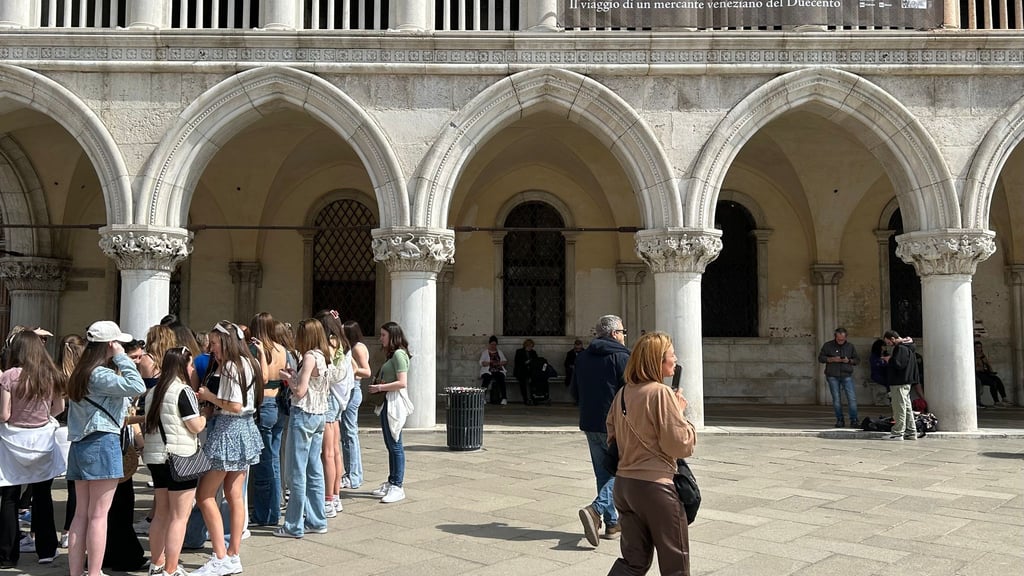Venice – Venice commemorates its most famous citizen Marco Polo (probably 1254-1324) with a large exhibition on the 700th anniversary of his death. The opening show with excavation finds, maps and books can be seen in the Doge’s Palace until September 29th. There are items on loan from many countries that the merchant from the Italian lagoon city had traveled to: from Armenia to Mongolia to China.
The exhibition “I Mondi di Marco Polo” (“The Worlds of Marco Polo”) is one of the highlights of an entire Marco Polo year in Venice. The city, which now has fewer than 50,000 permanent residents, is trying to attract even more visitors to Venice despite all the problems with mass tourism. This year’s carnival there also had the motto: “To the East – The Amazing Journey of Marco Polo”.
The best-known Venetian to date was probably born in 1254 into a family of merchants. His father and his uncle were also doing business in the Far East. Together with the two of them, Marco Polo set off on a journey in 1271 – when he was only 17 years old – that took him far to Asia. Only after almost a quarter of a century did he return to his hometown.
Marco Polo died at the age of 70
He reported on his adventures in a widely read book, which was eventually called “Il Milione” (in a later German translation: “The Wonders of the World”). He died at the age of almost 70, a highly respected merchant in his hometown. There are doubts about some of the descriptions of his travels, but overall they are considered reliable evidence of that time.
In total, more than 300 exhibits can be seen in the Doge’s Palace. These include the handwritten will and early editions of his adventures in various languages. From the holdings of the Berlin State Library comes a book that was printed in Nuremberg in 1477: “The Puch of the Noble Knight Marcho Polo”. There is the following description of the drawing of a young merchant: “This is the noble knight Marcho Polo of Venice, the greatest landfarer who describes to us the great wonders of the world”.
However, the picture is pure fiction: Nobody knows what Marco Polo actually looked like: there is no credible portrait from his lifetime. In Italy, many people still associate his appearance with his supposed image on the earlier 1,000 lire note: an older, doubtful-looking man with long white hair and a full beard.
Exhibits from all over the world
In a Hollywood film from 1938, to which the exhibition refers, he was also portrayed by a clean-shaven Gary Cooper. A 19th-century bust of Marco Polo with a bald head can also be seen in the Doge’s Palace.
On the 700th anniversary of the legendary traveler’s death, museums from all over the world made exhibits from countries that Marco Polo passed through at the time available: Chinese art from various dynasties, but also finds from Armenia, Mongolia and Iran, for example.
In addition, the house in which Marco Polo lived after his return to Venice was reconstructed on the screen with the help of a computer. A plaque now hangs on the new building that stands there today, very close to the Rialto Bridge. To this day there is no Marco Polo monument in the lagoon city.
